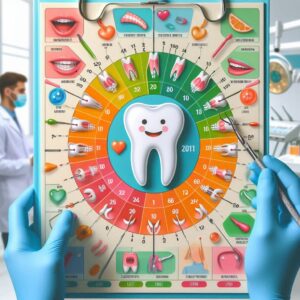dental code for less than 10 teeth: A Comprehensive Guide
For patients with fewer than 10 remaining teeth, proper dental coding is crucial for accurate treatment planning, insurance claims, and reimbursement. Whether due to periodontal disease, trauma, or congenital conditions, partial edentulism presents unique challenges in dental practice.
This guide explores the most relevant Current Dental Terminology (CDT) codes, ICD-10 diagnostic codes, and HCPCS codes for patients with severe tooth loss. We’ll also discuss treatment options, insurance considerations, and best practices for documentation.

2. Understanding Dental Coding Systems
A. Current Dental Terminology (CDT Codes)
The CDT Code Set, maintained by the American Dental Association (ADA), is the standard for dental procedures. For patients with fewer than 10 teeth, key codes include:
- D5110-D5120: Complete dentures (upper/lower)
- D5130-D5140: Immediate dentures
- D5211-D5214: Partial dentures (acrylic or cast metal)
- D5863: Precision attachment for partial dentures
B. ICD-10 Diagnostic Codes
ICD-10 codes justify medical necessity. Common codes include:
- K08.1: Loss of teeth due to trauma or periodontal disease
- K08.2: Atrophy of the edentulous alveolar ridge
- K08.9: Disorder of teeth and supporting structures, unspecified
C. HCPCS Codes for Medical Billing
HCPCS (Healthcare Common Procedure Coding System) may apply if medical insurance covers dental procedures (e.g., pre-radiation extractions).
3. Common Dental Codes for Fewer Than 10 Teeth
| Code | Description | Usage Scenario |
|---|---|---|
| D5110 | Complete upper denture (acrylic) | Full arch replacement |
| D5120 | Complete lower denture (acrylic) | Full arch replacement |
| D5213 | Upper partial denture (cast metal) | Remaining teeth provide support |
| D5863 | Precision attachment for partial denture | Enhances retention |
| D6010 | Surgical implant placement (per tooth) | Bone-supported restoration |
4. Clinical Considerations for Edentulous and Partially Edentulous Patients
A. Bone Loss and Ridge Resorption
Patients with fewer than 10 teeth often experience alveolar bone resorption, complicating denture fit and implant placement.
B. Prosthodontic Solutions
- Complete Dentures (D5110/D5120): Best for fully edentulous patients.
- Removable Partial Dentures (D5211-D5214): For patients with some remaining teeth.
- Dental Implants (D6010-D6190): Provide stability but require sufficient bone density.
5. Insurance and Reimbursement Challenges
- Medicare: Generally does not cover dentures unless medically necessary (e.g., post-cancer treatment).
- Medicaid: Varies by state; some cover basic dentures.
- Private Insurance: Often covers 50% of prosthodontic costs.
6. Case Studies
Case 1: Patient with 6 Remaining Teeth
- Treatment: Upper partial denture (D5213) + lower complete denture (D5120).
- Outcome: Improved chewing efficiency and aesthetics.
7. FAQs
Q1: What is the best treatment for a patient with only 5 teeth?
A: A removable partial denture (D5213) or implant-supported overdenture may be recommended.
Q2: Will insurance cover implants for patients with fewer than 10 teeth?
A: Most dental plans consider implants cosmetic, but medical insurance may cover them if medically necessary.
Q3: What if a patient can’t afford dentures?
A: Some Federally Qualified Health Centers (FQHCs) and dental schools offer low-cost options.
8. Conclusion
Proper dental coding for patients with fewer than 10 teeth ensures accurate billing and optimal treatment. Understanding CDT, ICD-10, and HCPCS codes helps streamline insurance claims. Prosthodontic solutions like dentures and implants restore function and aesthetics, improving quality of life.


